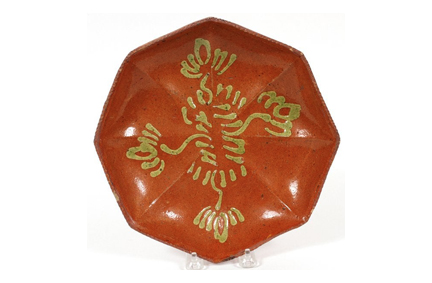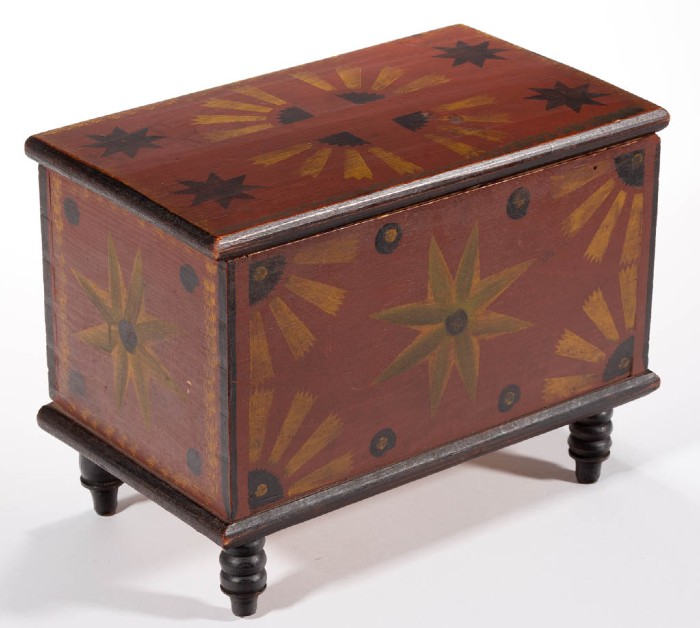
NEW YORK – Nearly everyone has heard of the Shenandoah Valley, either through song, history class or an item that was produced there by the many artisans who populated the region in the 18th and 19th century. More on that shortly, but first a brief geography lesson: The Shenandoah Valley is a fairly modest stretch of land that straddles northwestern Virginia and the eastern panhandle of West Virginia. To the east are the Blue Ridge mountains. To the west is the edge of the Alleghenies. Three rivers loosely define the region: the Potomac, the James and, of course, the Shenandoah.
The Shenandoah Valley is both scenic and historic, but to fans of antiques and collectibles the region produced many fine folk artists, potters, paint-decorated furniture makers and other artisans. The question is … why? How was it that this small, unassuming (although admittedly beautiful to the eye and naturally abundant) swath of territory, one that’s really not much different from many other areas of the country, should become blessed with talent, so much so that songs and movies are made in its honor? The reasons, it turns out, are obvious but complex.
Jeffrey S. Evans, president and senior specialist at Jeffrey S. Evans & Associates in Mount Crawford, Virginia, said the Shenandoah Valley of Virginia was one of the great cultural melting pots in the country during the 18th and 19th centuries. “The original draw was the availability of free land, 400-acre patents as long as the required improvements were made by the patentee,” he explained. “The mix of German-, English-, and French-speaking settlers provided a rich environment and substantial demand for goods and services.”
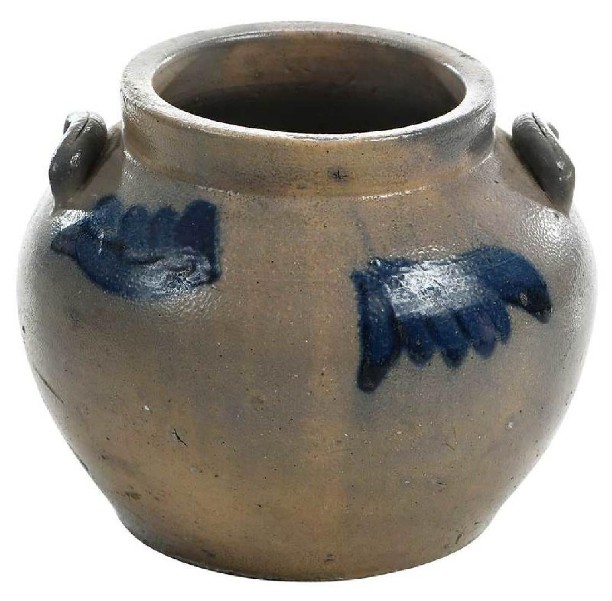
In short, this variety of cultures allowed for an influx of artisans who at first catered to their own ethnic community, but over the generations these different communities began to assimilate and produce styles and forms that are distinct to the Shenandoah Valley. “The narrow confines of the mountains and constant movement of new settlers provided a cultural funnel for Valley residents as well as those passing through headed for new unsettled lands to the west,” Evans said. “All of this not only influenced the decorative arts of the Valley but those in southwestern Virginia, Tennessee, Kentucky and farther west.”
Ron Pook of Pook & Pook Inc. in Downingtown, Pennsylvania, said the same Germanic settlers who settled in Lancaster County, who were prolific in their rich cultural heritage, transferred their artistic talents from the Old World to the new in the Shenandoah Valley. “This included fraktur, hand-drawn birth certificates, pottery, paint-decorated furniture and other items,” he said. “They flocked to the valley because of the rich farmland, which allowed them to prosper and left them time to encourage productivity and express themselves.”
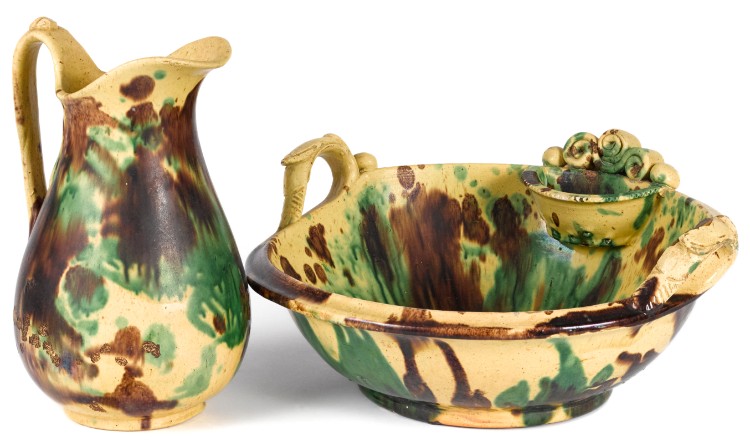
John Nye of Nye & Company Auctioneers in Bloomfield, New Jersey, said the urge to push west to “tame wild lands” was one reason people pushed farther and farther away from the coast. “German, Swiss and Scotts-Irish immigrants represented some of the nationalities making this pilgrimage,” he said. “The lush farmland of the Shenandoah Valley enticed them to stay and, to make it feel more familiar, they replicated the furniture, pottery and ironwork with which they grew up and were familiar. These artisans decorated furniture with bright painted pigments, sometimes with pictorial or figural imagery, and the wrought-iron with spurs, serifs and other flourishes.”
As for current market demand, all three experts agreed that the demand for quality Shenandoah Valley decorative art and folk art are at an all-time high. “This demand continues to far outpace the supply which has caused prices to remain solid, and in many instances rise above pre-recession levels, one of the few segments of the antiques market that can make this claim,” Evans said.
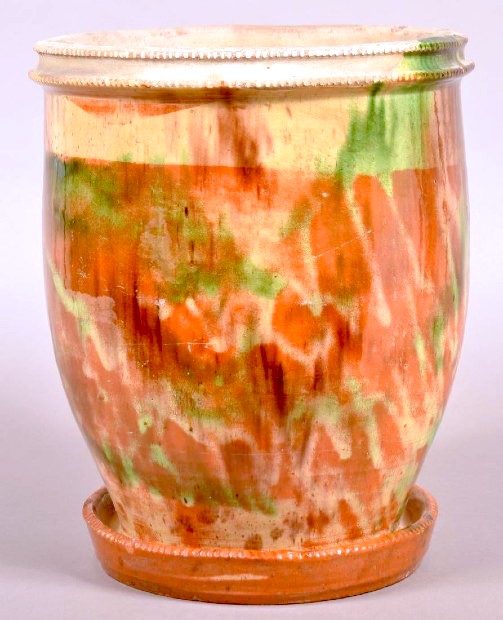
He said several factors have contributed to the market staying strong. “One is the fact that a large number of pieces from the valley retain their original provenances – many having been passed down in the original family for multiple generations. This history and cultural context provide a compelling storyline allowing for a better understanding of the settlement and social experience of the American Backcountry. Museums and collectors are really drawn to and pay a premium for this history.”
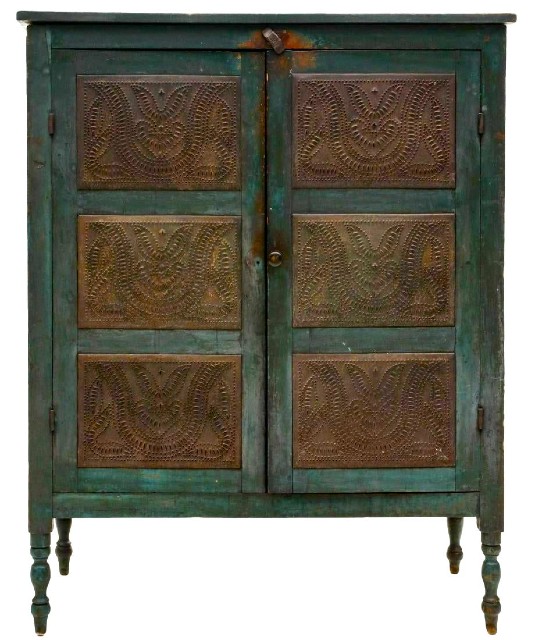
Another reason, Evans explained, is the scholarship that has taken place over the past 20 years has created a strong demand. The Museum of the Shenandoah Valley in Winchester, Virginia, the Virginia Quilt Museum in Harrisonburg, and the Shenandoah Valley Heritage Center (now Rocktown History) in Dayton have produced a number of exhibitions with accompanying catalogs on Shenandoah Valley decorative arts. Each institution also holds a significant collection of Valley objects, many of which are on permanent exhibit. Also, the Museum of Southern Decorative Arts in Winston-Salem, North Carolina, has sponsored Shenandoah Valley scholarship and has a permanent gallery devoted to Valley objects.
Pook said the current demand for antique items from the Shenandoah Valley is very strong today, equal to or higher than 5-10 years ago. “We foresee no softening of the market in the future,” he predicted. “In fact, we anticipate a demonstration of the strength of this market in January 2021, when we will have several excellent unique examples of Bell, Bacher and other Shenandoah Valley pottery featured at auction.”
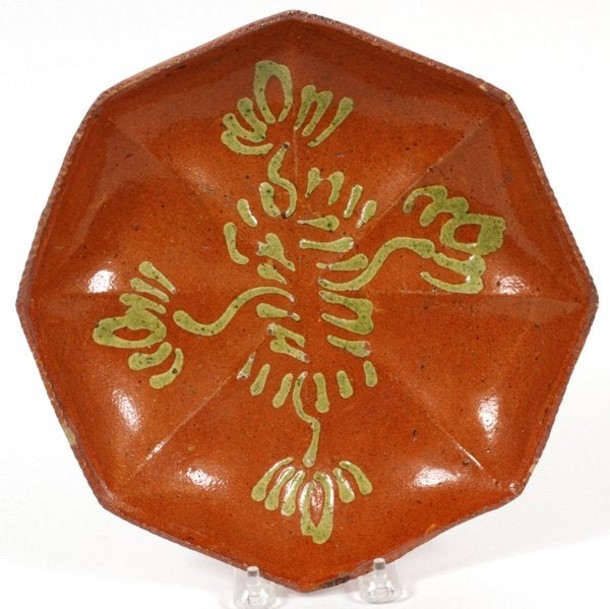
Nye said the market for pieces produced in the Valley of Virginia is robust, particularly for the rarest examples. “It’s a trend I don’t see changing in the coming years,” he said. “Whimsicality can easily translate into strong demand and high prices.”
The Shenandoah Valley has occasionally made its way into popular American culture. The region naturally served as the setting for the 1965 film Shenandoah (and its 1974 musical adaptation). An associated song by James Stewart, titled The Legend of Shenandoah, was a minor hit in 1965, reaching #133 on the Billboard chart. Probably the most famous shout-out came from singer John Denver, who sang of “Shenandoah River” in the first verse of his hit song Take Me Home Country Roads. The song later became the state song of West Virginia.


